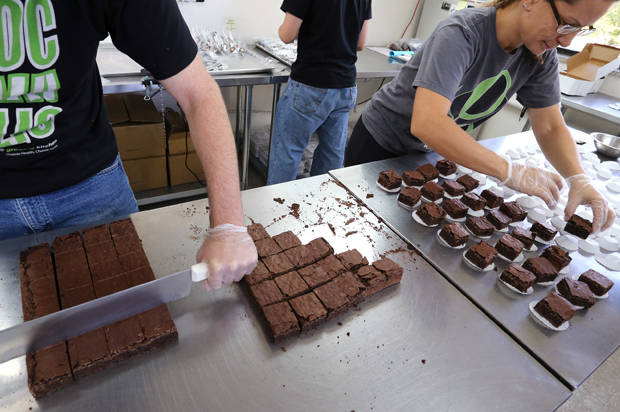he popularity of marijuana edibles has been one of the big surprises of the seismic culture shift we are undergoing around weed. Maybe it’s because of the increasing social disdain around smoking anything, or maybe it’s part of that whole foodie thing, but edibles are big business.
In Colorado alone, more than 5 million edible marijuana products were sold (and presumably consumed) last year. Edibles didn’t go on sale in Washington state until mid-year last year, but they’re reportedly going gangbusters up there, too. And they make up an increasing share of the market in medical marijuana states, particularly California.
But edibles can be problematic. People unfamiliar with them can get way too messed up—witness Maureen Dowd and her infamous marijuana candy bar episode, or, more tragically, the case of the college student who leapt to his death after consuming them.
Part of the problem is simple ignorance on the part of naïve edibles users, but even the most sophisticated cannabis aficionados don’t know that much about how and why they work.
Here, with a tip of the hat to The Cannabist, are five reasons it’s hard to be sure what you’re getting into when you bite into that marijuana munchie.
1. Eating pot isn’t the same as smoking pot.
There are a couple of important differences. First, when you smoke pot, the cannabinoids in it go into your lungs and thence directly into your bloodstream, getting that high-inducing THC into your system in a hurry, while if you eat it, it is digested and passed through the liver before entering the bloodstream.
That’s why you get high right away smoking pot, but the effects of eating it take a half hour or more to come on. People get themselves in trouble by eating some, waiting a while, and then eating more because they don’t feel high yet, only to end up getting slammed by a double dose after first one, then the other kicks in. Be patient.
But in addition to differences in the rapidity of the onset of the high, the method of ingestion can cause changes in the quality of the high. When you smoke pot, the cannabinoids in it are decarboxylated—turned to smoke—when the flame ignites the bud, but with edibles, that decarboxylation has taken place long before, during the process of extracting the cannabinoids from the raw plant material. Depending on the method of extraction, that process could alter the composition of the cannabinoids in a way that simply smoking them doesn’t.
2. Most edibles don’t come from individual plants.
When you smoke a bud of marijuana, you are smoking actual plant material from an actual, individual plant. Or if you buy a big bag of weed, you’re either getting buds from one plant or buds from plants that are the same variety (and are generally identical clones).
But when you’re consuming edibles, you’re typically consuming your pot in the form of cannabis oils added to the food recipes. Since the buds are desired in the smoking market, edibles manufacturers use the clippings from trimming—previously considered a waste product—to make their oils. And not only does that trim not come from a single plant, it doesn’t even come from the same strain or even the same sub-species, indica or sativa. MORE
Photo Credit: AP/Brennan Linsley
